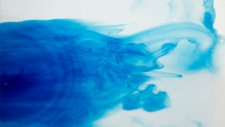Solubility in Water
Readiness

TEKS Objective
Students will classify matter based on physical properties, including mass, magnetism, physical state (solid, liquid, and gas), relative density (sinking and floating), solubility in water, and the ability to conduct or insulate thermal energy or electric energy.
Essential Understanding
The student knows that (1) matter has measurable physical properties and (2) those properties determine how matter is classified, changed and used.
Science Background
What are Mixtures and Solutions? Virtual Chembook from Elmhurst College (website) - Easy-to-read chart that defines/differentiates between homogenous and heterogeneous mixtures, solutions and colloids.
What are Mixtures and Solutions?
Virtual Chembook from Elmhurst College, www.elmhurst.edu
Solutions and Mixtures: Chem4Kids (website) - Basic information about solutions and mixtures, accompanied by clear illustrations that promote understanding of basic chemistry.
Solutions and Mixtures
by Andrew Rader, Chem4Kids, www.chem4kids.com
Signature Lesson
What Dissolves in Water: BioEd Online (website) - Students investigate whether several common substances are soluble in water.
- Supporting Lessons
- Extensions
- Assessment Ideas
- Literature Connections
- Related
TEKS - Additional Resources
Supporting Lessons
How Can We Find Out What Is in Water? BioEd Online (website) - Students use simple paper chromatography to investigate a mystery liquid, comprised of different substances dissolved in water.
How Can We Find Out What Is in Water?
BioEd Online, www.bioedonline.org
Elaboration Lessons and Extensions
State Your Solution: American Chemistry Society (website) - Investigation that helps students understand what it means for a liquid or a gas to dissolve in a liquid.
State Your Solution
by the American Chemistry Society, www.acs.org
Can Gases Dissolve in Water?: American Chemical Society (website) - Students will design experiment to measure gas in club soda.
Gases Dissolve in Water?
American Chemical Society, www.middleschoolchemistry.com
Assessment Ideas
- Have students create a chart of sample mixtures and non-mixtures.
- As a performance assessment, create several different mixtures and challenge students to separate (or come up with plans to separate) the mixtures into their separate components.
Literature Connections
Mixtures and Solutions. Aloian, M. (ISBN-13: 978-0778742500)
Mixtures and Solutions. Karpelenia, J. (ISBN-13: 978-0756946425)
Salt. Walpole, Brenda (ISBN-13: 978-1560740605)
Matter. Cooper, Christopher (ISBN-13: 978-0751361353)
Additional Resources
Examples and Non-Examples of Solutions and Mixtures: SlideShare (website) - Presentation of images showing examples and non-examples of solutions and mixtures.
Examples and Non-Examples of Solutions and Mixtures
SlideShare, www.slideshare.net
TEKS Navigation
Grade 5
User Information
Not Registered Yet?
Sign Up Today!
Need Assistance?
If you need help or have a question please use the links below to help resolve your problem.

Comments